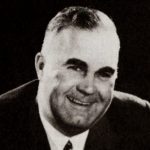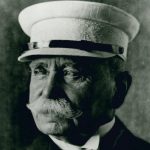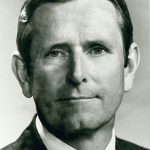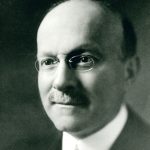The brothers who built an automotive empire
Building on the business their father founded in Rüsselsheim, Germany in 1862, the Opel brothers (Carl, Wilhelm, Heinrich, Friedrich, and Ludwig) transformed the family firm from a renowned builder of sewing machines and bicycles into one of Europe’s preeminent automotive manufacturers.
Waning bicycle sales in the late 1890’s influenced the brothers to begin exploring opportunities to diversify their business. After observing an automobile race from Berlin to Leipzig in 1898, Fritz and Wilhelm saw the automobile as the way forward. They purchased a small automobile company which helped them produce a vehicle in 1899. However, it was technologically obsolete compared to offerings from Benz and Daimler and sales were poor.
Undaunted, the brothers continued pursuing opportunities in automobile production. In 1901, they signed an agreement with French automaker Darracq to manufacture vehicles under the Opel-Darracq name. These cars were based on a Darracq chassis and engine with Opel bodies. Fritz and Wilhelm later stripped down a chassis to study and make improvements on and even designed their own engine. The brothers used their engine and improved chassis to create the first Opel Motor Car, the 10/12 hp. The company eventually became self-reliant enough to engineer its own vehicles and introduced its first volume model, the 4/8 hp, in 1909. Marketed to physicians as the Doktorwagen (“Doctor’s Car”), it sold for about half of the price of contemporary vehicles and prioritized reliability as well as durability.
By the end of 1910, 12% of all cars manufactured in Germany were Opels. However, in 1911, the Opel factory was nearly destroyed by a fire, leading the brothers to cease building sewing machines and expand automobile production. Tragedy would strike the family in 1916 when the youngest Opel, Ludwig, was killed during WWI. The company continued to grow after WWI and in 1924, Opel became the first German automaker to utilize an assembly line, a technique they observed during visits to Henry Ford’s factories in Detroit, MI.
By 1928, Opel boasted a 35% market share for vehicle sales in Germany and was also the country’s largest automobile exporter. Sadly, the deaths of brothers Carl (1927) and Heinrich (1928) dampened this accomplishment. Opel’s success did not go unnoticed and in 1929, Alfred P. Sloan purchased an 80% stake in the company on behalf of General Motors for $33 million. The company continued to grow under GM control and in 1937, Opel’s Rüsselsheim plant became Europe’s highest volume automobile factory.





